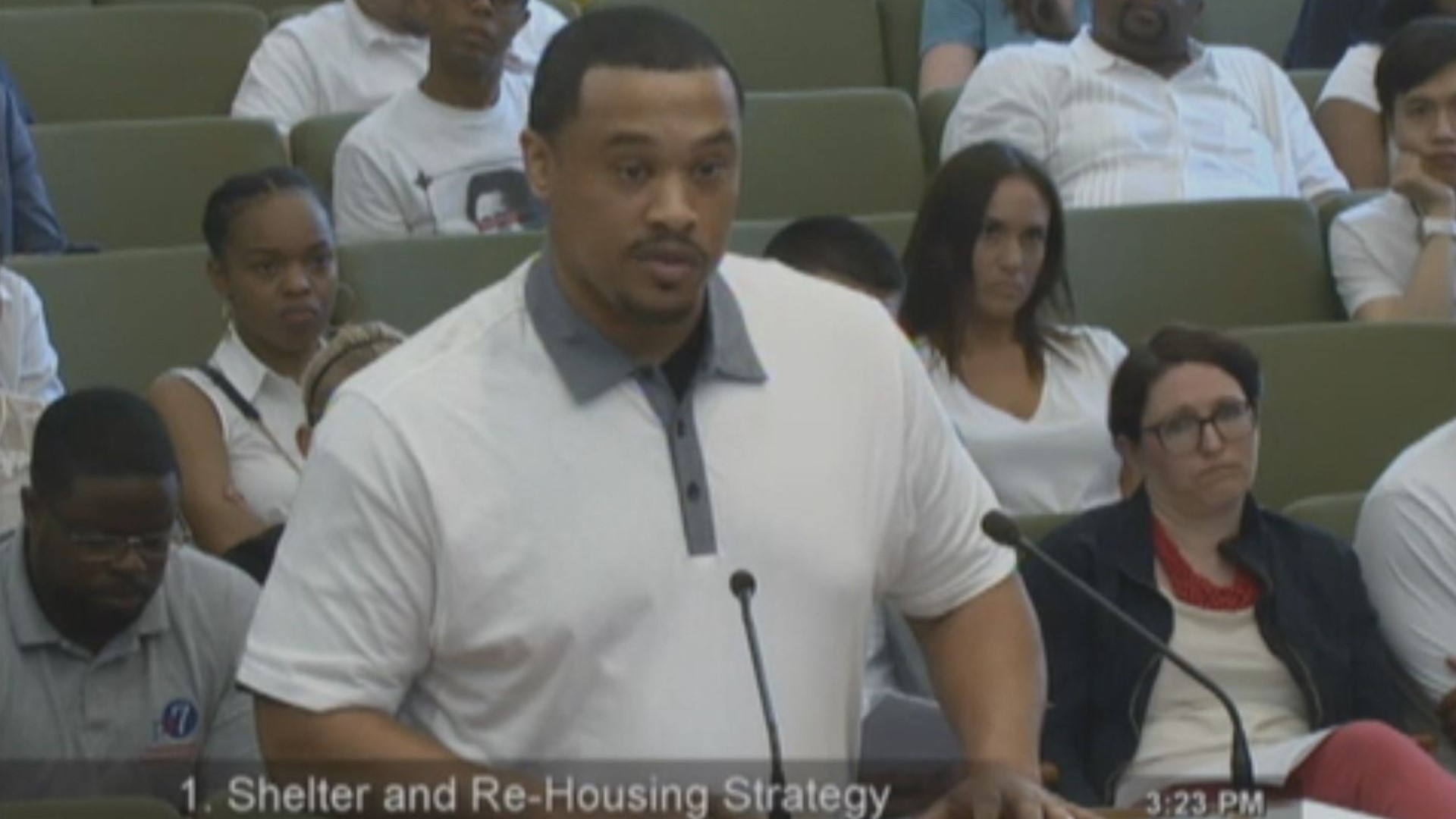SACRAMENTO, Calif. — Leaders with St. HOPE Public Schools say they worry that a homeless shelter the city wants to build near their schools will impact student safety.
They voiced their concerns before Sacramento City Council members Tuesday afternoon, at a special meeting where members ultimately voted to move forward with exploring the site.
The city wants to build a 100-bed homeless shelter at a Caltrans-owned site under Business 80, at the intersection of Alhambra and the W/X Streets Corridor.
“The Alhambra Re-Housing Shelter is envisioned to serve people living unsheltered in the immediate surrounding community and allow access through referral only,” city council agenda documents say.
St. HOPE Public Schools is a free, public charter school network, educating kids from transitional kindergarten through 12th grade. The district’s schools and economic development projects all operate within Oak Park, just blocks — even mere feet, in some cases — from the city’s proposed homeless shelter site.
While St. HOPE leaders agree that solutions to homelessness in Sacramento are desperately needed, they worry about the type of people who will be staying nearby, since preliminary plans for this particular shelter call for it to operate from a “low barrier approach.”
That means people staying there don’t have to meet requirements such as sobriety or mental health treatment in order to receive services.
“Instead, operators must implement practices which foster an affirmative environment which seeks to meet individuals from a ‘where they are’ approach and orient case management to focus on individualized needs and challenges toward obtaining permanent housing,” city documents say.
“It is essential that the city adequately engages the parents, teachers, staff and the nearly 2,500 students that sit within 5 blocks of this proposed site before making any type of decision regarding whether this is an appropriate location,” St. HOPE CEO and president Jake Mossawir wrote in a statement to ABC10. “Locating a low-barrier homeless triage shelter, that does not screen for drugs, criminal backgrounds or sexual offender status, within 100 feet of a preschool should be a discussion that engages parents.”
He noted the proposed shelter site “backs up to an after-school program, and was only revealed for public consideration in the last couple weeks.”
A man identifying himself as Brady King, Dean of Students at St. HOPE's Sacramento High School, spoke at the meeting and presented council members with a map showing all of St. HOPE's schools and programs located near the proposed site of a new homeless shelter.
"I'm concerned our teachers, our staff, our parents and students have kind of been left out of this process for the proposed Oak Park homeless triage site," King said. "We work hard every day as a staff to ensure our students are safe. We already have families concerned about some of the problems that the neighborhood presents itself, and this just kind of adds to that."
City Council voted unanimously, Tuesday, to move forward with the plan, which means city staff will keep exploring the site as a possibility. The actual plan for that specific site is not set in stone; the city can opt to operate the shelter not as a low-barrier shelter.
"Maybe it is not all low-barrier triage," Mayor Darrell Steinberg said, addressing those at the meeting with concerns about the proposed site. "And I would challenge you, though, if it's not low-barrier triage, to participate in good faith and help make something good happen."
He said Council Member Jay Schenirer, in whose district the proposed site sits, will work with St. HOPE and the surrounding community.
"The more sites we take off the table because of neighborhood concerns, the fewer sites we have to then try to deal with the problem," Steinberg said. "And yet the community is more angry if we're not doing something aggressive about this."
Other parts of the approved plan came with more concrete results, including the purchase of Capitol Park Hotel in downtown Sacramento for use as a homeless shelter.
Funding for these and other homeless shelter projects throughout the city comes, in part, from $15.7 million in Measure U funds that City Council earmarked in February specifically for homelessness. A week later, Steinberg revealed a plan to add 800 shelter beds to Sacramento's existing inventory over the course of the next two years. He plans to fund those beds through "existing funds from Measure U, funds from the State Homeless Emergency Aid Program (HEAP) and private donations, as well as approximately $11 million from future State funding allocations and additional fundraising," according to city documents.
On March 26, city council approved the development and construction of the first re-housing triage shelter on Ethan Way, in a Cal Expo parking lot, which resulted in 100 additional beds.
At Tuesday afternoon's meeting, Steinberg listed the current count of homeless shelter beds either added or in development since unveiling his 800-bed February plan.
- 100 beds at the Ethan Way/Cal Expo shelter
- Up to 180 beds at Capitol Park Hotel
- 100-200 beds in South Sacramento, site(s) TBD
- 160 beds converted from existing shelter beds in the city "into triage, with a much more assertive effort with case management and mental health and substance abuse services to move people through much faster than the current shelter system is moving people through," Steinberg said.
- 100 possible beds at the Alhambra-X Street-W Street CalTrans site
"The goal here, and it will be imperfect, is to move people through (the shelter beds) every four months," Steinberg said at the end of Tuesday's meeting. "Think about the magnitude of this. If we can get 800 beds and move people through every four months, that's 2,400 people a year we can move off the streets. That is not only worthy. It's necessary and it's essential."
Continue the conversation with Becca on Facebook.
________________________________________________________________

